

Sprint Hurdles Photo Sequence
All good sprint hurdlers must be fast sprinters. An efficient hurdle clearance technique is essential, but fast times are produced through quick running between the hurdles.
 1 |
The athlete approaches the hurdle with a good sprinting style, hips high. |
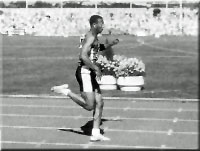 2 |
|
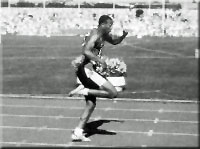 3 |
The lead leg knee must be picked up fast and driven at the hurdle. The lower part of the lead leg is left low and extends once the knee reaches the height of the hurdle. The lead leg knee must be picked up in line with the vertical centre line of the body. There should be no tendency for the lead leg knee to be pulled across the body or for the lower leg to go out and around. The lead leg folds at the knee while the trailing leg is still driving the hurdler forward into an active take-off. The left arm (the arm opposite the lead leg) is very active, while the right arm "sleeps". The trailing leg drives the body at the hurdle as the lead leg rises. As the lead knee and thigh drive upwards, the trunk dips. This is the beginning of the "layout" over the hurdle. |
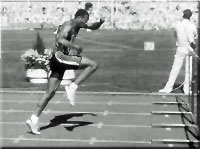 4 |
|
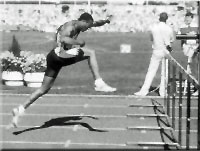 5 |
|
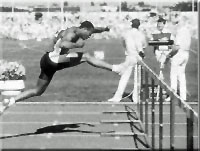 6 |
The athlete does not "float" over the hurdle in this phase. As soon as the lead foot passes the hurdle, it begins its fast descent to the ground. During this phase, the trail leg is moving quickly, assisted by the left arm driving back. Athletes should think of the trail leg knee pulling the foot through vigorously. |
 7 |
|
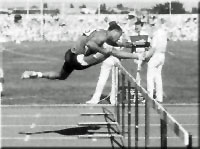 8 |
|
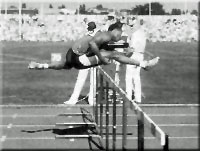 9 |
As the heel of the lead leg passes the barrier, it must be pulled down and back to land under the body. There is no necessity for the lead leg to be straight over the top of the hurdle. The athlete should feel the trailing knee sweeping wide and flat over the hurdle. As the trailing leg crosses the hurdle, the foot must be cocked at the ankle so that the foot does not hit the barrier. The lead leg straightens as it descends towards the ground. The right arm becomes more active as the athlete leaves the hurdle in frames 11 and 12. |
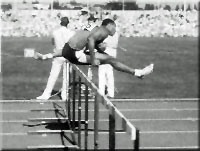 10 |
|
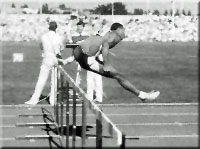 11 |
|
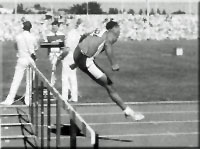 12 |
|
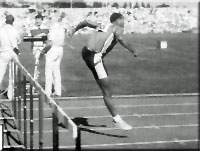 13 |
After crossing the barrier, the trailing knee continues to rise and comes around in front of the body. As the athlete reaches the ground with the lead leg, sprinting is resumed. The hips must not sink as the athlete lands. Frames 15 and 16 show an excellent return to sprinting form, with active arms. |
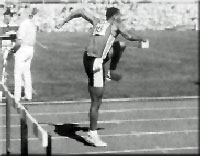 14 |
|
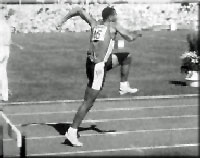 15 |
|
 16 |
Rules of Competition
The competition rules for this event are available from:
Page Reference
If you quote information from this page in your work, then the reference for this page is:
- MACKENZIE, B. (2001) Sprint Hurdles Photo Sequence [WWW] Available from: https://www.brianmac.co.uk/hurdles/photoseq.htm [Accessed